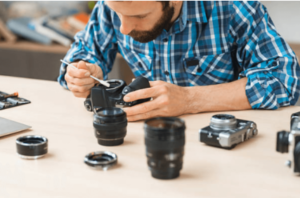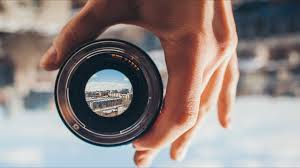Using Negative Space Effectively
Negative space, also known as white space, is the empty space around and between elements in a design or layout. It’s a powerful tool in visual composition that can enhance clarity, create emphasis, and improve the overall aesthetic of your work. But how can you use negative space effectively? Let’s dive in and explore this fascinating aspect of design.
Understanding Negative Space
What is Negative Space?
Negative space is the area surrounding the main objects in a design. It’s not just blank space; it’s an active element that helps to define and highlight the main subject. Think of it as the silent partner that makes the star shine brighter.
Positive vs. Negative Space
Positive space refers to the areas occupied by the main subjects of the design, while negative space is the background. Both are crucial for creating a balanced and effective composition.
Historical Context of Negative Space in Art and Design
Artists and designers have long understood the value of negative space. From the minimalistic approach of Japanese ink paintings to the abstract works of modern artists, negative space has been a staple in art and design for centuries.
The Psychology Behind Negative Space
Visual Perception
Negative space helps our brains process visual information more efficiently. It allows our eyes to rest and focus on the important elements without being overwhelmed.
Cognitive Load Reduction
By reducing clutter and unnecessary details, negative space lowers cognitive load. This means viewers can understand and engage with your design more easily.
Emotional Impact
Negative space can evoke feelings of elegance, sophistication, and calmness. It gives your design a sense of order and tranquility, making it more pleasing to the eye.
Benefits of Using Negative Space
Enhances Readability
Proper use of negative space improves readability by providing sufficient breathing room around text. This makes it easier for readers to follow along without straining their eyes.
Creates Focus
Negative space naturally draws attention to the focal point of the design. By isolating key elements, it guides the viewer’s eye to where you want it to go.
Improves Aesthetics
A well-balanced use of negative space creates a clean, uncluttered look that is visually appealing. It adds a touch of elegance and professionalism to your design.
Encourages Interaction
In web design, negative space can improve user experience by making navigation more intuitive. It allows users to find what they’re looking for quickly and easily.
Negative Space in Different Design Fields
Graphic Design
In graphic design, negative space is used to create logos, posters, and other visual materials that are clear and impactful. Think of the FedEx logo, where the arrow hidden in the negative space between the “E” and the “x” symbolizes speed and precision.
Web Design
Web designers use negative space to improve readability, navigation, and overall user experience. It helps to highlight key elements like calls to action, making websites more user-friendly.
Interior Design
In interior design, negative space refers to the areas left empty to create a sense of balance and harmony. It prevents rooms from feeling cluttered and overwhelming.
Photography
Photographers use negative space to draw attention to the subject and create a sense of depth and simplicity. It allows the subject to stand out without distractions.
Principles of Using Negative Space
Balance and Harmony
Achieving balance between positive and negative space creates a harmonious composition. This balance helps in maintaining visual interest without overwhelming the viewer.
Proportion and Scale
Proper proportion and scale ensure that the negative space complements the positive space. This balance is crucial for a cohesive and effective design.
Simplicity and Minimalism
Less is often more. Embracing simplicity and minimalism allows negative space to shine, creating a more powerful and elegant design.
Contrast and Emphasis
Using contrast in color and shape can enhance the impact of negative space. It helps to emphasize important elements and create a dynamic visual experience.
Techniques for Effective Use of Negative Space
Grid Systems
Grids provide a framework that helps organize elements systematically. They ensure that negative space is distributed evenly, creating a balanced layout.
Padding and Margins
Proper use of padding and margins around elements ensures they have enough breathing room. This separation enhances clarity and focus.
Typography and Line Spacing
Choosing the right typography and adjusting line spacing can significantly improve readability. It prevents text from feeling cramped and overwhelming.
Color and Background Choices
Using contrasting colors and backgrounds can enhance the perception of negative space. It adds depth and helps important elements stand out.
Common Mistakes in Using Negative Space
Overcrowding
Trying to fit too much into a design can negate the benefits of negative space. It’s important to prioritize and remove unnecessary elements.
Imbalance
An imbalanced use of negative space can make a design feel awkward and uncomfortable. Strive for harmony to create a pleasing composition.
Ignoring Context
Negative space should be used with the context in mind. What works in one design might not work in another. Consider the purpose and audience.
Misjudging Proportions
Incorrect proportions between positive and negative space can lead to a confusing and ineffective design. Always test and adjust as needed.
Case Studies of Effective Negative Space Use
Iconic Logos
Logos like FedEx, Apple, and Nike use negative space masterfully to create memorable and effective brand symbols.
Successful Website Designs
Websites like Apple’s and Google’s use negative space to enhance usability and focus attention on key elements.
Memorable Advertisements
Advertisements that utilize negative space effectively stand out and deliver their message clearly and powerfully.
Tools and Resources for Implementing Negative Space
Design Software
Tools like Adobe Photoshop, Illustrator, and Sketch offer features that help designers manipulate negative space effectively.
Online Tutorials
Websites like Coursera and YouTube provide tutorials on mastering negative space in various design fields.
Design Inspiration Websites
Platforms like Behance and Dribbble showcase examples of excellent use of negative space, providing inspiration and ideas.
Improving Your Design with Negative Space
Analyzing Existing Designs
Look at designs that effectively use negative space and analyze why they work. Apply these principles to your own work.
Iterative Design Process
Refine your designs through multiple iterations. Each version should improve the use of negative space.
Seeking Feedback
Get feedback from peers and clients. Fresh perspectives can reveal areas where negative space can be better utilized.
Negative Space and Branding
Creating a Strong Brand Identity
Negative space can help create a strong, recognizable brand identity. It adds sophistication and clarity to your brand elements.
Consistency Across Media
Maintain consistent use of negative space across all brand materials to ensure a cohesive and professional look.
Enhancing Brand Recognition
Effective use of negative space makes your brand more memorable and easier to recognize.
Photographers use negative space to draw attention to the subject and create a sense of depth and simplicity. It allows the subject to stand out without distractions. If you’re interested in night photography, you might also want to check out our article on What setting do I use on my camera for a really long exposure for night photography?
RELATED POSTS

Understanding Different File Types and Their Impact on Memory Card Storage

How Can You Fix Focus Issues in a Camera Lens That Consistently Produces Soft or Blurry Images?

How Photographers Can Optimize Their Use of Multifunctional Control Dials for Faster Adjustments ?

